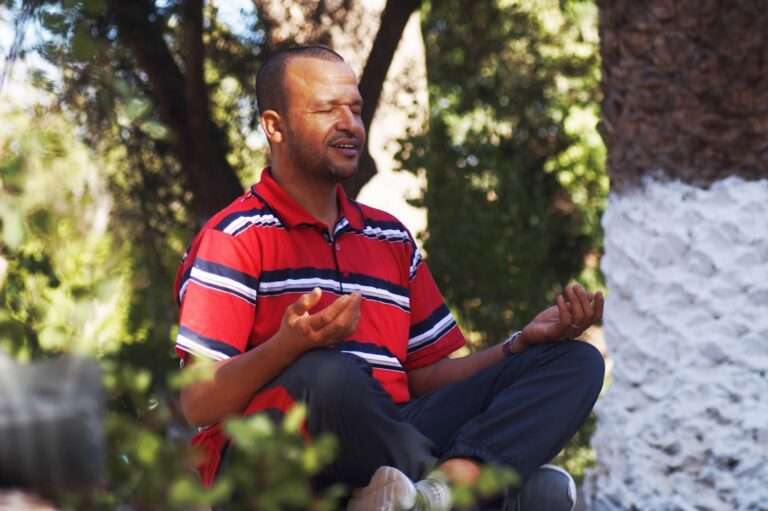What does the sun symbol represent in Aztec culture?

The sun occupied a central and revered position in Aztec culture, symbolizing power, life, and divinity. Aztecs regarded the sun as a deity and worshipped it accordingly. They viewed it as the source of all life and the provider of light and warmth to the world.
The sun was also associated with the cycle of life, death, and rebirth, mirroring its daily rising and setting. Aztecs incorporated the sun into their religious practices, art, and architecture, and it significantly influenced their daily lives. In Aztec art and symbolism, the sun was frequently depicted as a large, radiant disc with extending rays.
It was also commonly represented as a face with a prominent nose and tongue, symbolizing its life-giving role. Aztecs believed that the sun required nourishment through human blood to continue its celestial journey, leading to elaborate rituals and sacrifices. The sun was closely linked to concepts of time and the calendar, with its movements marking the passage of days, months, and years.
The sun’s significance in Aztec culture was profound, deeply intertwined with their religious beliefs and daily practices.
Key Takeaways
- The sun held great significance in Aztec culture, representing power, life, and time.
- In Aztec religion, the sun was worshipped as a deity and was associated with sacrifice and warfare.
- The sun was a symbol of authority and was often depicted in the attire of rulers and leaders.
- The sun was believed to be the source of life and fertility, and its movements were closely tied to agricultural practices.
- The sun played a crucial role in the Aztec calendar, marking time and guiding religious ceremonies and rituals.
- In modern Aztec culture, the sun continues to be a prominent symbol, representing resilience and cultural identity.
The Sun as a Deity in Aztec Religion
The Patron God of the Aztecs
In Aztec religion, the sun was worshipped as a powerful deity known as Huitzilopochtli, who was considered the patron god of the Aztecs. Huitzilopochtli was often depicted as a fierce warrior adorned with hummingbird feathers and carrying a shield and spear. He was believed to be the divine protector of the Aztec people and was associated with warfare, the sun, and fire.
The Necessity of Human Sacrifices
The Aztecs believed that Huitzilopochtli required constant nourishment in the form of human sacrifices in order to continue his battle against darkness and ensure the sun’s daily journey across the sky. The Aztecs built a grand temple in Tenochtitlan, their capital city, dedicated to Huitzilopochtli, where elaborate rituals and sacrifices were performed to honor him. These rituals often involved the sacrifice of captured warriors or other individuals, whose hearts would be offered to the sun god in order to sustain his strength and power.
The Importance of the Sun in Aztec Beliefs
The Aztecs believed that without these sacrifices, Huitzilopochtli would be unable to defeat the forces of darkness and chaos, leading to the end of the world. As such, the sun held a central place in Aztec religious beliefs and practices, and its deity, Huitzilopochtli, was revered as a powerful and essential figure in their pantheon of gods.
The Sun as a Symbol of Power and Authority

The sun held immense symbolic significance in Aztec society as a representation of power and authority. The Aztecs believed that their rulers were descended from the sun god, Huitzilopochtli, and as such, they were seen as divine figures with the authority to rule over the people. The sun’s role as a symbol of power was also reflected in the architecture of Tenochtitlan, where the Templo Mayor, the main temple dedicated to Huitzilopochtli, was situated at the center of the city, symbolizing its central role in Aztec society.
The sun’s association with power and authority was also evident in the regalia worn by Aztec rulers, which often featured symbols of the sun and its rays. These symbols served to legitimize the ruler’s authority and divine right to rule, as well as to reinforce their connection to the sun god. Additionally, the sun’s role as a source of light and warmth made it a fitting symbol for leadership and guidance, as rulers were seen as responsible for providing protection and sustenance for their people.
Overall, the sun’s symbolism as a representation of power and authority played a crucial role in shaping Aztec society and reinforcing the legitimacy of their rulers.
The Sun as a Source of Life and Fertility
The Aztecs revered the sun as a source of life and fertility, believing that its warmth and light were essential for the growth of crops and the sustenance of all living beings. They viewed the sun as a nurturing force that provided sustenance for their agricultural endeavors and ensured the fertility of the land. The sun’s role in promoting fertility was also reflected in its association with Tonatiuh, another important deity in Aztec religion who was considered the fifth sun and was believed to have sacrificed himself to become the sun.
The Aztecs performed rituals and ceremonies to honor Tonatiuh and ensure his continued favor, believing that his blessings were essential for ensuring bountiful harvests and healthy livestock. These rituals often involved offerings of food, flowers, and other gifts to express gratitude for the sun’s life-giving properties. Additionally, the sun’s association with fertility was also reflected in its depiction in art and symbolism, where it was often portrayed alongside images of plants, animals, and other symbols of abundance.
Overall, the sun’s role as a source of life and fertility held immense significance in Aztec culture and played a crucial role in shaping their agricultural practices and religious beliefs.
The Sun as a Marker of Time and Calendar in Aztec Society
The movement of the sun played a central role in marking time and creating a calendar system in Aztec society. The Aztecs developed a complex calendar system that was based on the movements of celestial bodies, including the sun, moon, and stars. They used these celestial movements to create two separate calendars: one for tracking religious ceremonies and rituals, known as the tonalpohualli, and another for agricultural purposes, known as the xiuhpohualli.
The tonalpohualli consisted of 260 days and was used for religious ceremonies and divination practices. It was based on a combination of 20 day signs and 13 numbers, which cycled through each other to create a unique combination for each day. The xiuhpohualli, on the other hand, consisted of 365 days and was used for tracking agricultural cycles and determining when to plant crops.
It was divided into 18 months of 20 days each, with an additional 5 “nameless” days at the end of the year. The movement of the sun across the sky played a crucial role in determining these calendar systems, as it marked the passage of days, months, and years. The Aztecs closely observed the sun’s movements and used them to determine important dates for religious ceremonies, agricultural activities, and other significant events.
Overall, the sun’s role as a marker of time and calendar played an essential role in shaping Aztec society and organizing their daily lives.
The Sun as a Symbol of Sacrifice and Warfare

The Nourishment of the Sun
To ensure the sun’s continued strength and power, the Aztecs performed elaborate rituals and sacrifices to honor the sun god Huitzilopochtli. These rituals often involved capturing prisoners from neighboring tribes or engaging in warfare to obtain sacrificial victims. The victims’ hearts would then be ritually removed as an offering to the sun god at temples dedicated to Huitzilopochtli.
Sacrifice and Cosmic Order
The Aztecs believed that these sacrifices were essential for maintaining cosmic order and preventing the end of the world. Without them, it was believed that darkness would prevail over light. The sun’s association with sacrifice was deeply ingrained in Aztec religious beliefs and practices.
Warfare and the Sun God
The sun’s connection to warfare was also reflected in its association with Huitzilopochtli, a fierce warrior deity associated with conquest and battle. The Aztecs believed that by engaging in warfare and capturing prisoners for sacrifice, they were fulfilling their duty to honor Huitzilopochtli and ensure his continued favor. Overall, the sun’s symbolism as a representation of sacrifice and warfare played a crucial role in shaping Aztec religious beliefs and practices.
The Sun in Modern Aztec Culture and Symbolism
The symbolism of the sun continues to hold significance in modern Aztec culture, where it is often used to represent concepts such as strength, vitality, and resilience. The image of the sun can be found in contemporary art, jewelry, clothing, and other forms of cultural expression as a way to honor traditional beliefs and connect with ancestral heritage. In addition to its cultural significance, the sun also holds practical importance in modern Aztec communities for its role in agriculture and natural cycles.
Many traditional agricultural practices are still based on observing celestial movements such as those of the sun to determine planting times and harvest seasons. Furthermore, modern interpretations of Aztec symbolism often incorporate elements of the sun to convey messages of hope, renewal, and connection to nature. The image of the sun serves as a reminder of the enduring legacy of Aztec culture and its continued relevance in contemporary society.
In conclusion, the symbolism of the sun holds immense significance in Aztec culture, serving as a representation of power, life, fertility, time, sacrifice, warfare, and modern cultural expression. Its central role in shaping religious beliefs, societal structures, agricultural practices, and artistic expression underscores its enduring importance in both historical and contemporary contexts. The symbolism of the sun continues to serve as a powerful reminder of the rich cultural heritage of the Aztec people and their enduring legacy in modern society.
FAQs
What is the sun symbol in Aztec culture?
The sun symbol in Aztec culture represents the god Huitzilopochtli, who was the patron of the Aztec capital Tenochtitlan and the god of the sun and war.
What does the sun symbol represent in Aztec culture?
The sun symbol represents power, strength, and the source of life in Aztec culture. It was also associated with the cycle of life, death, and rebirth.
How was the sun symbol used in Aztec art and architecture?
The sun symbol was prominently featured in Aztec art and architecture, often depicted as a face with rays emanating from it. It was also incorporated into the design of temples and other important structures.
What rituals and ceremonies were associated with the sun symbol in Aztec culture?
The Aztecs held various rituals and ceremonies to honor the sun god, including human sacrifices to ensure the sun’s continued movement across the sky.
Is the sun symbol still important in modern Aztec culture?
While modern Aztec culture has evolved and changed over time, the sun symbol still holds significance as a representation of the Aztec heritage and traditions. It continues to be used in art, jewelry, and other cultural expressions.





